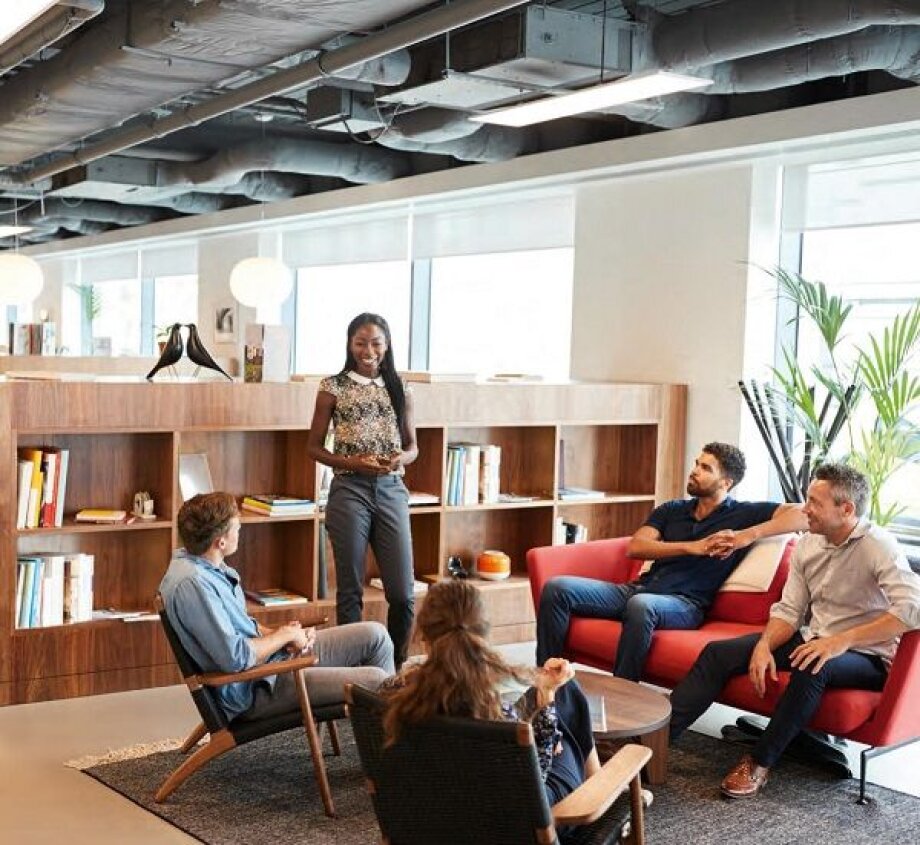The office property market will be embracing the “new normal” in the coming months with the offices of tomorrow expected to look a bit different than before the outbreak of the coronavirus pandemic. The current crisis has strengthened some of the existing market trends including the drive toward greater flexibility as well as the focus on providing cooperation- and creativity-fostering areas and ensuring building users’ well-being. This will have a direct impact on office space arrangement and fit-out in the next few years.
CHANGING ORGANIZATIONAL CULTURE
“Office space arrangement trends will largely be shaped by the changing culture of organizations and the way in which companies will operate once the pandemic has ended,” argues Jakub Zieliński, team leader, workplace advisory, at JLL. In his opinion, remote work – until recently seen as a welcome employer-offered perk – is here to stay with us for good, but the extent to which it will be in use will depend on the specific nature of each particular company.
While some companies primarily depend on the work of independent professionals, others need the cooperation of an entire team of people and the efficient exchange of know-how and information in order to achieve success. The latter often takes place in informal situations, in places such as office kitchens during lunch breaks that play a role in boosting employees’ motivation and creativity, Zieliński claims. This is an aspect that may sometimes be overlooked, but also one whose significance has become evident during this year’s lockdown.
In this sense, physical offices will certainly remain useful, if only as kind of “social clubs” for those employees who do part of their job (especially the part requiring much concentration) at home. On the other hand, it remains to be seen how many of such employees will eventually choose to work partly from home once a return to the office has become possible. With the size of apartments in Poland remaining well below the EU average, not all actually find the home office a very attractive and convenient option.
Danuta Barańska, creative director at fit-out company Tétris, is of a similar opinion. She says remote work will increasingly often be combined with work in the office and the latter will play the “hub and club” role. This means the need for creating workplaces that foster cooperation and interaction and facilitate all kinds of business and social meetings. “We recommend our clients to look at their offices once again and adapt them to the norms and expectations which have appeared due to Covid-19,” Barańska adds.
FEELS LIKE HOME
What could all of this mean for office interior design trends in the coming months? For one thing, apart from a rearrangement of space to ensure more distance between desks, a division of the floor plan into a number of clearly defined specific zones is likely. Those zones could include so-called focus rooms (for focused work), as well as co-working type social areas and areas dedicated to all the company employees working on a particular project and facilitating the decision-making process within a given team.
As numerous employees who have been working from home this year are expected to return to the office in 2021, at least some employers may choose to modify the office setting so that it better resembles the home atmosphere and guarantees a comparable level of comfort. The ideal office will be able to address employees’ need for home-like coziness and intimacy (for example by providing a different kind of furniture, redesigning kitchens and reducing noise), while at the same time meeting all the typical workplace needs.
EVEN MORE PROPTECH
For another thing, modern offices of the near future will definitely be even more high-tech than they are today. The latest property technology solutions will be employed to facilitate everyday work even further, as well as to ensure building users’ safety. Those will include apps used for an ever more efficient reservation of desks, conference rooms and parking spaces. Conference rooms will more often than before be used for virtual meetings – expect more investment in super-fast internet connections and video conferencing equipment.
Proptech apps will also be useful for monitoring the quality of the air in the office, an issue which, because of the ongoing pandemic, will certainly remain important for tenants in the months to come. In spite of the changes in the labor market that Covid-19 is helping accelerate, offices will retain their function as places reflecting the company values and culture. The proper fit-out will remain the key to promoting the company brand, building a sense of belonging and loyalty among the employees and – last, but not least – attracting new talent.
















